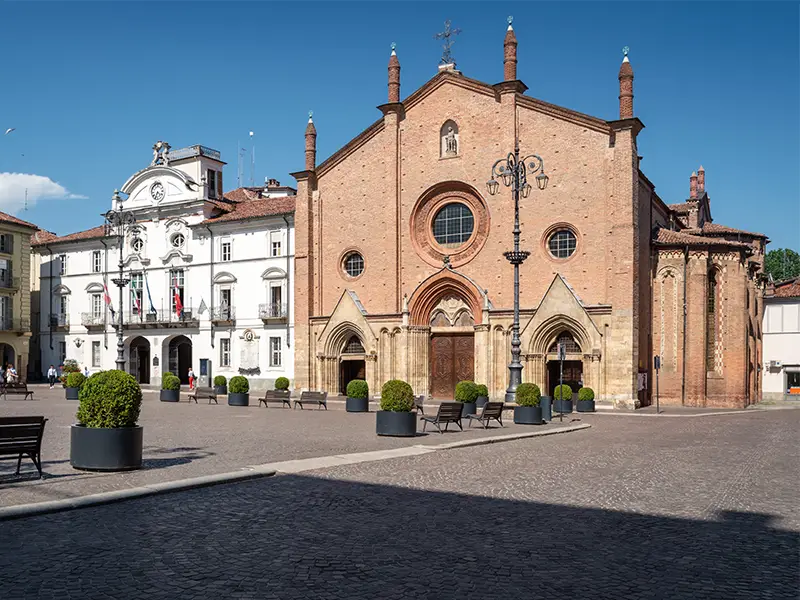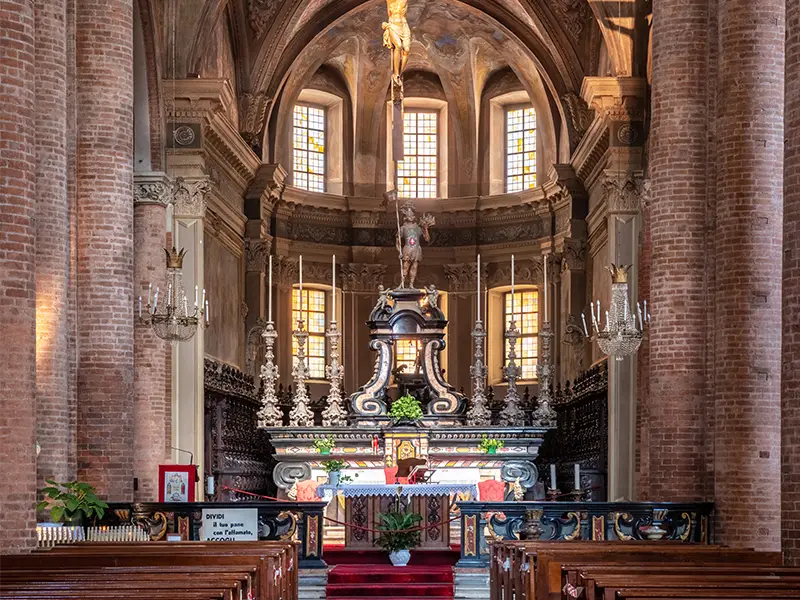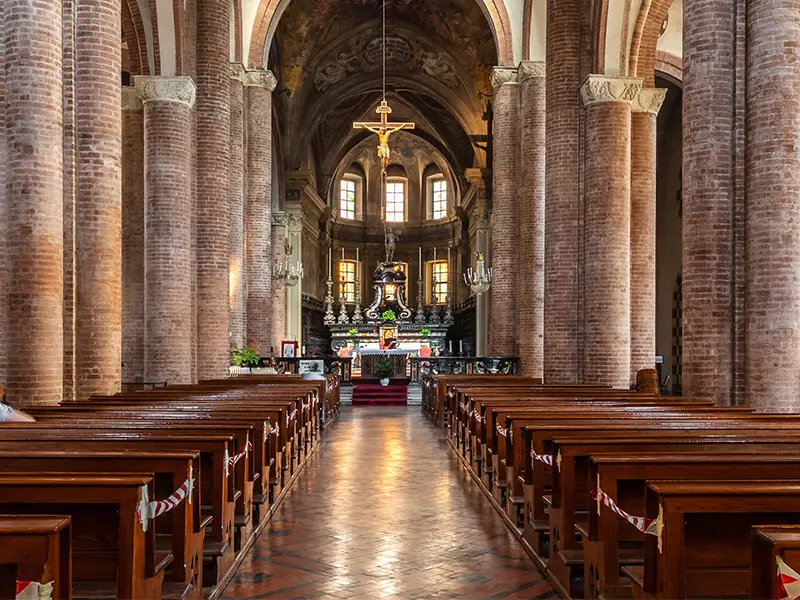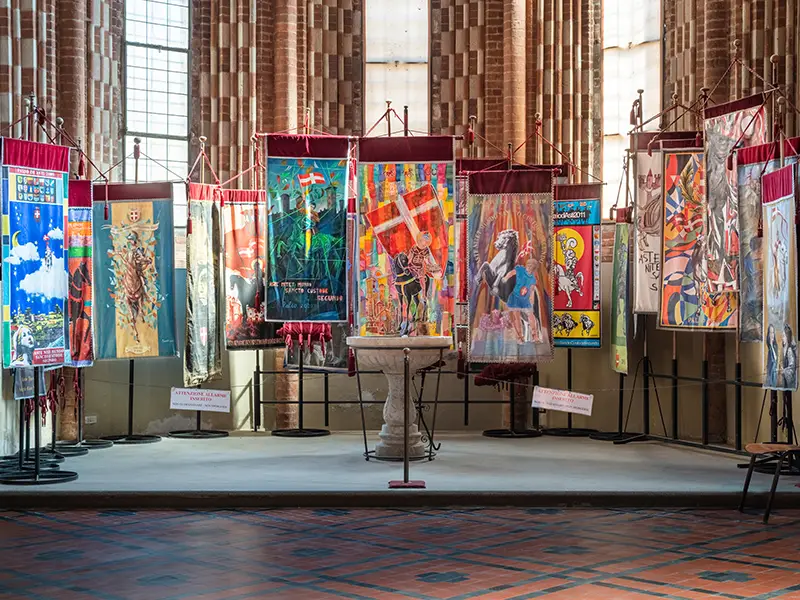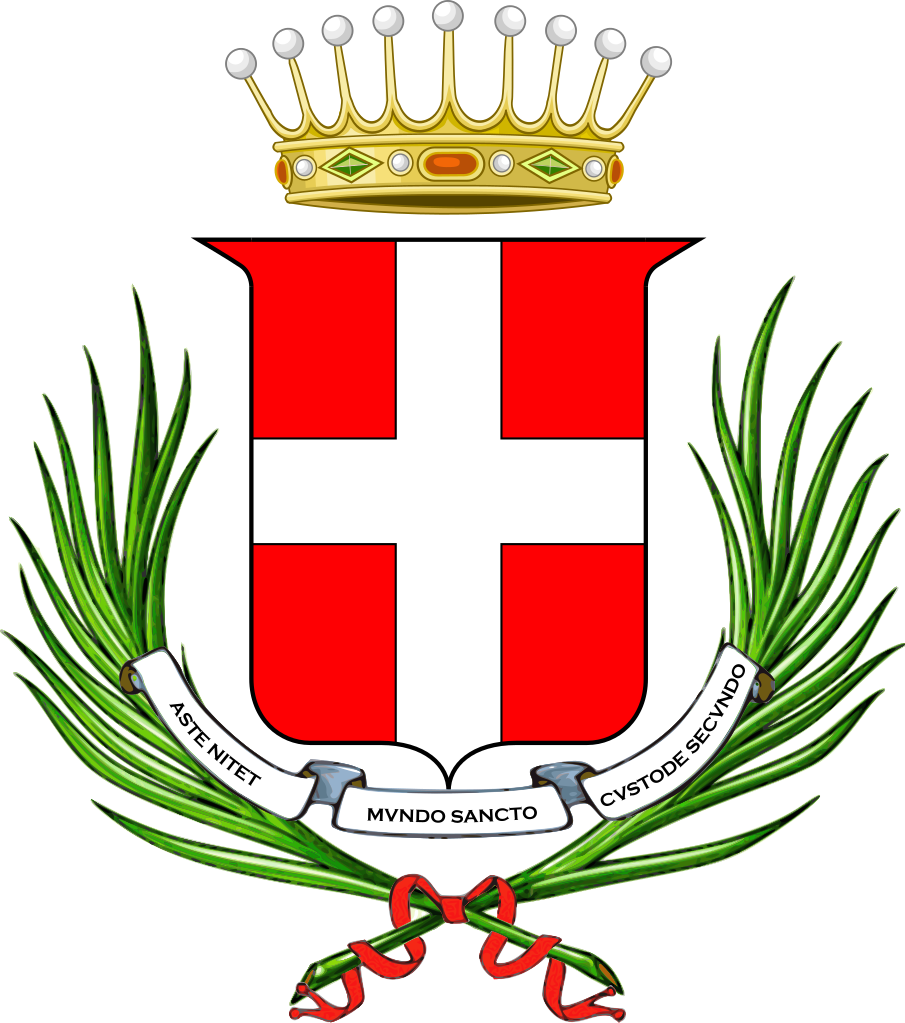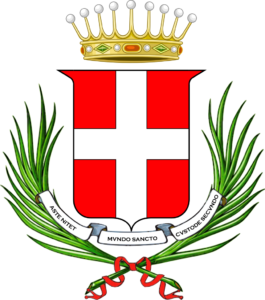It is one of the oldest churches in Asti
It is dedicated to the patron saint of the city
The remains of San Secondo (Saint Secundus) are kept in the crypt
The Origins
A first place of worship dedicated to the patron saint of Asti was built just outside the city walls, to later become a cemetery church. In this place, according to legend, in 119 AD, Saint Secundus was martyred. Soon the area became the second ecclesiastical pole of the city of Asti, after the Cathedral.
Structure and Works
The current Collegiate Church was built between the thirteenth and fifteenth centuries and has a three-nave structure with arches and cross vaults, on a Latin cross plan.
Among the most significant works that can be admired inside there is the Polittico dei Magi (Polyptych of the Magi) (1518 ca.) by Gandolfino da Roreto, the anonymous altarpiece of the Nativity (second half of the 16th century), the wooden statue of Saint Lucia ( 1648), the Crucifix (1658) by Michele Enaten and the wooden choir designed by Paolo Pusterla (1702).
Renovation
Of the original early Christian and Romanesque structures, only the 10th-century bell tower and the crypt, which can be accessed by two staircases on either side of the presbytery, are still present today. During its long history, the church underwent numerous reconstruction works.
The church that visitors can admire today is the result of renovation works carried out between 1968 and 1974. The works made it possible to recover some portions of frescoes dating back to between the fourteenth and seventeenth centuries in the three chapels of the right aisle, removing the nineteenth-century decoration that covered them.
The niche above the central rose window was reopened in 1988 and inside there is a copy of the medieval statue of Saint Secundus.
Saint Secundus and the Palio
The famous Palio of Asti, which takes place every year on the first Sunday of September, is held in honor of Saint Secundus. The first chapel in the right aisle houses the Carroccio (Cart of the city of Asti) and the drapes of the Palio, which are donated to the Collegiate Church during the medieval ceremony of the Offer of the Palio, on the first Tuesday of May.
Starting from the 10th century, the Chiesa di San Secondo (Church of Saint Secundus) assumed more and more importance in the city context, especially due to the consideration gained by the merchant class and the new municipal institutions. This became a real place of identification for the merchant class, so much so that it acquired the nickname "de Mercato", maintained for centuries.




